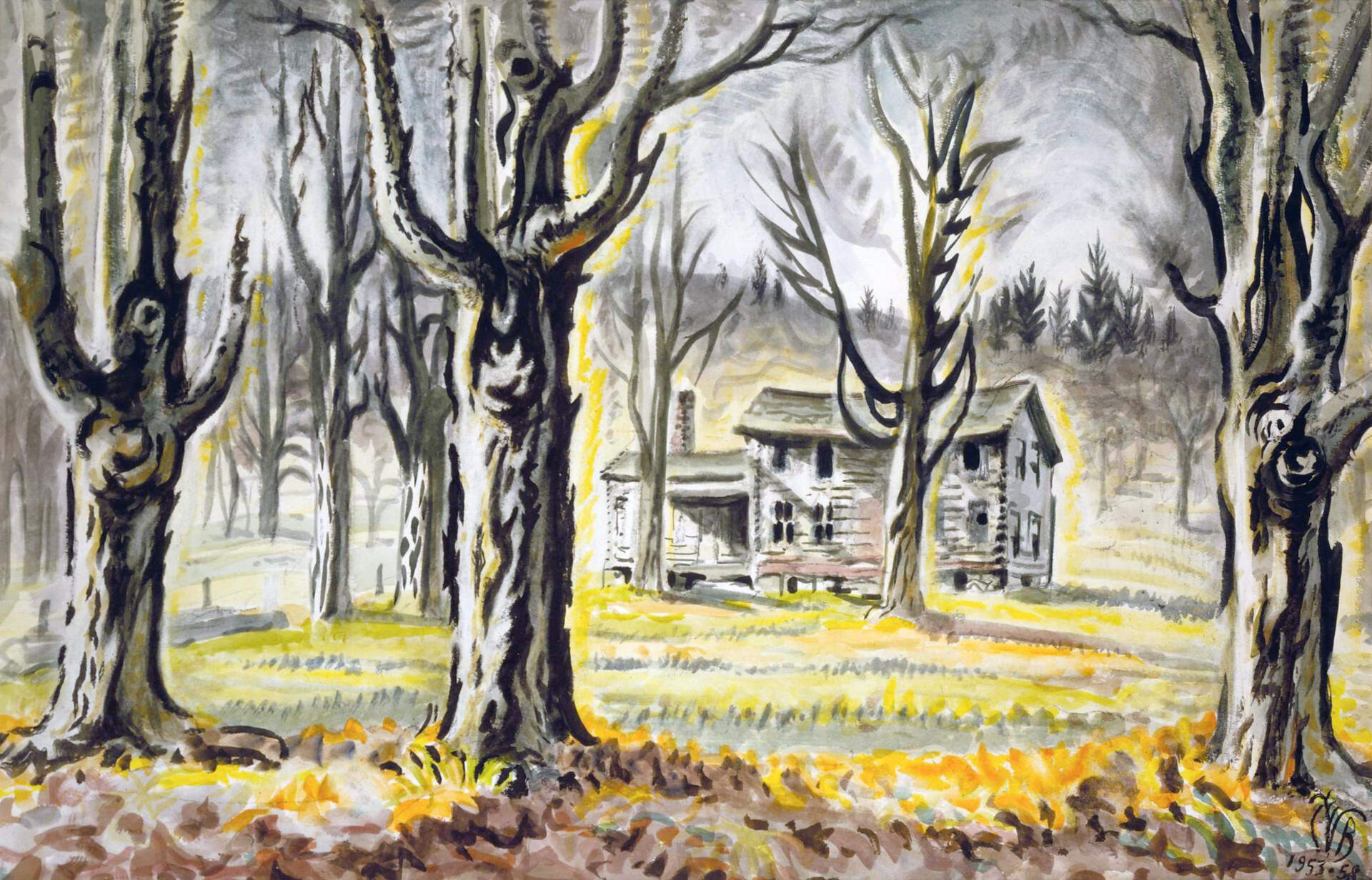
Charles E. Burchfield (1893-1967), Old Farm House and Maple Trees, 1953-58; watercolor on paper, 25 1/4 x 39 1/4 inches; Image from the Burchfield Penney Art Center Archives
Charles E. Burchfield, Journals, August 19, 1942
Tuesday, Aug 19, 2014
Yesterday and today, very warm humid weather, the air full of thick bluish white haze, the sky a brassy yellow. For an hour or so both morning and evening the sun a glowing ball of red, and at mid-day like melted brass, or gold. Sunlight on the ground, or on the other objects, pale, and of a pinkish gold cast; the shadows likewise pale and [bluish] green.
The early part of the afternoon I spent in wandering here and there, vainly trying to find some subject that would typify the season, the kind of weather & the particular kind of day. It was not until late afternoon that I found my subject, a white house with a tall symmetrical maple, surrounded by a field of dead grass, with the golden afternoon sunlight behind and a little to the right.
I painted until the sun was low in the west, a red ball, in the thickening mists. Then I drove eastward, and parked under a large maple, with a wide valley to the south, a hilly pasture land crowned by the low woods to the north. I enjoyed the evening as I can only after having worked hard beforehand. As daylight slowly subsided, the half-moon became clearer low in the south, glowing with a pale brassy color. From all side came the sounds of insects, black crickets, tru-crickets, green grasshoppers. - At twilight I took a walk up the hill. All the time I was thinking that I must absorb to the full because the time was at hand when I could not get out as frequently. And on account of this I believe I became more acutely sensitive to the scene around me.
I drove home by going straight westward to the Springville Road and thence by way of Chestnut Ridge. Here I parked a moment by the road, turned off my lights, and listened to [katydid] chorus, which was going full and strong, imparting to the woods nearby, with their black cave-like interiors a mysterious, a sinister quality. Low in the southwest, the moon had become a tarnished old gold color, in a thick brownish violet sky.
Charles E. Burchfield, August 19, 1942